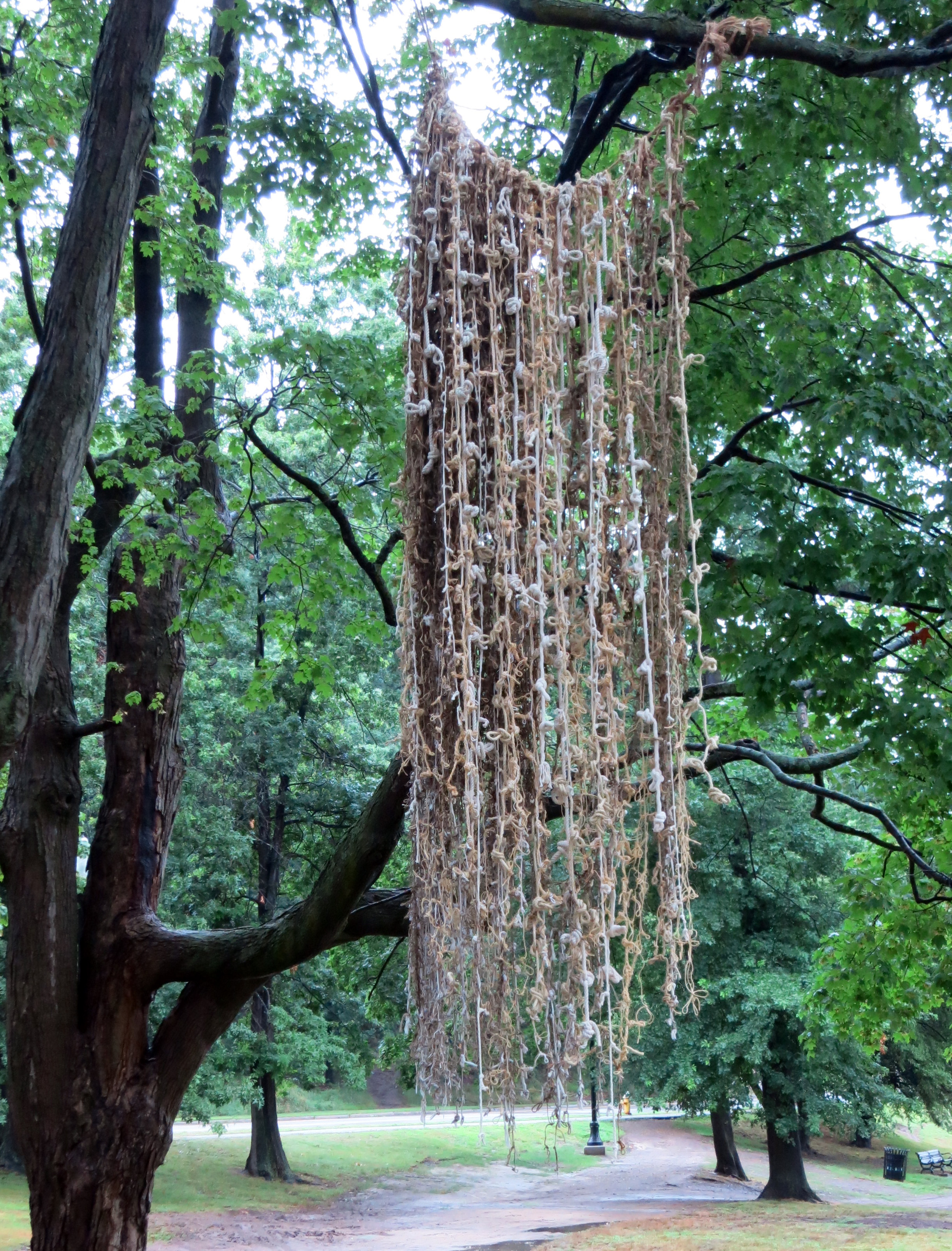Materials
Pick up a ball of string or rope at the hardware store. Choose one that appeals to you, that resonates with you. It could be nylon and yellow, or natural jute, clothesline, or cotton.
Session One: Introduction
We'll take a seat around the work table with chosen material and begin by asking why we chose this string and not the fifty or so other options.
For example, some strings are quite thin; others are smooth. The one I have in my hand is nylon braided – I can see the tufts at the cut end have frayed, with the outer nylon opening outwards and the finer strands from inside standing up. I didn’t realize at first how many strands there were inside and how the wrapper holds them so tightly together. I wonder if I take it apart further what I will discover.
There are manila ropes, cotton ropes, polypropylene ropes. Some are twisted; others are braided. What does yours look like?
Session Two: Finding Your Way
Unravel some of it, play with it, tie it, untie it, loop it, braid it. Then recall that this is the thread of your life. There have been slack times, tightly stretched periods, twisted times, and knots. Sometimes there’s a knot that is so tight you can’t find a way to loosen one of the strands. You give up, leave the knot there, and go on.
Can you call to mind one of these times? A change in your life, the death of someone you love, or even a small knot, such as when you answered too quickly. Can you see that every event is connected to everything else? My own knots are like rosary beads: I know my way by touching them.
Session Three: The Way it is
Read the following poem by William Stafford:
The Way It Is
There’s a thread you follow. It goes among
things that change. But it doesn’t change.
People wonder about what you are pursuing.
You have to explain about the thread.
But it is hard for others to see.
While you hold it, you can’t get lost.
Tragedies happen; people get hurt
or die; and you suffer and get old.
Nothing you do can stop time’s unfolding.
You don’t ever let go of the thread.
What has been the dominant thread that you see weaves through your life? How has it supported you? Have you lost it and then found it again? The golden thread throughout my life has always been art. What is yours? What are some of the other strands?
Filling the Vessel, Linda Hoffman, in process 1999
Session Four: Your Golden Thread
Share some of your string with another participant. Find a way to weave the two strings together. Do this without speaking. Then talk about what you created with each other.
Source, Linda Hoffman & Margot stage, installed in Worcester
Session Five: Creating a Sculpture
Make loops with your mass of string. Let it fall to the ground. Then pick it up and hang it from the ceiling. We’ll look at everyone’s unique creation.
Then we will clip some of everyone’s string and tie it to our own string mobile.
Notice how in your sculpture your string is still dominant, but the other strings add color and texture, accents, and interest. Your string is the support and your creation is unique.
Session Six: Letting Go
Bring a few objects to our next session to add to your string. Words in wire, sticks, a nail, a shell. Nothing that you are attached to and wouldn't mind losing. Put out on the table all but one of your objects. Walk around and choose a few objects and then add these collected objects to your string mobile. We’ll walk around together noticing how we feel about our chosen items distributed on the other mobiles.
Look at your own piece and share your reaction to it. Does “I don’t like mine” or “I like mine” occur to you? Now, recall that this is your life. Grab and hold and love it. Form it some more. Keep shaping it. You can’t discard it. Keep using it.










